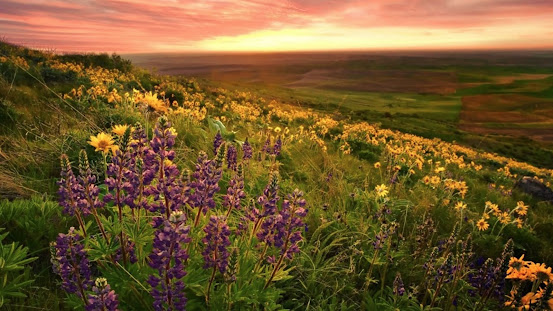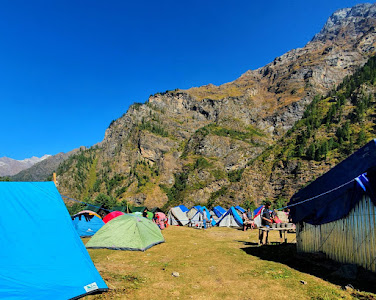Valley of flowers
The Valley of Flowers, nestled in the Himalayas, is a mesmerizing national park renowned for its vibrant blooms and diverse flora. This UNESCO World Heritage Site spans over 87 square kilometers in the state of Uttarakhand, India. Recognized as a UNESCO World Heritage Site in 2005, the Valley of Flowers holds immense ecological significance. Its preservation is crucial for maintaining biodiversity and protecting endangered plant species.
Plan Your Valley of flower trek :- The best time to visit the Valley of Flowers is during the monsoon season, from July to September. This period sees the valley come alive with a riot of colors as numerous flowers bloom. Trekking in the Valley of Flowers requires permits obtained from the Forest Department of Uttarakhand. Visitors must also acquire a National Park entry permit available at Ghangaria. Packing essentials for the trek include sturdy hiking boots, weather-appropriate clothing, sunscreen, insect repellent, a first aid kit, plenty of water, and high-energy snacks to sustain you throughout the journey.
Day-wise Itinerary:-
Day 1: Upon arrival in Joshimath, travelers can rest and acclimatize to the altitude. It's an opportunity to explore the town and make final preparations for the trek.
Day 2: Start the trek from Joshimath to Govindghat, a moderate hike offering stunning views of the surrounding mountains. Govindghat serves as the base camp for the Valley of Flowers trek.
Day 3: Trek from Govindghat to Ghangaria, a picturesque village situated at the confluence of the rivers Alaknanda and Lakshman Ganga. The trail passes through lush forests and meadows.
Day 4: Spend the day exploring the Valley of Flowers, immersing yourself in its enchanting beauty and diverse flora. Keep an eye out for rare Himalayan flowers like the Brahma Kamal.
Day 5: Begin the return trek from Ghangaria to Govindghat, retracing your steps through the stunning landscapes. Take time to soak in the serenity of the surroundings.
Day 6: Trek back to Joshimath, marking the end of your journey through the Valley of Flowers. Departure from Joshimath to your next destination.
Highlights of the Trek:- Encounter a rich diversity of flora and fauna, including over 500 species of wildflowers, alpine shrubs, and medicinal plants. The valley is also home to rare species like the blue poppy and Himalayan edelweiss. Marvel at the breathtaking landscapes of the Himalayas, with snow-capped peaks, cascading waterfalls, and meandering rivers. Each turn of the trail offers panoramic views that are sure to leave you spellbound. Experience the unique culture of the region as you interact with locals in the villages along the trekking route. Learn about their traditions, cuisine, and way of life, adding a cultural dimension to your adventure.
Tips for a Successful Trek:- Prioritize physical fitness and undertake regular exercise and endurance training before embarking on the trek. This will help you cope with the challenges of high altitude and long-distance hiking. Acclimatize gradually to the altitude by ascending slowly and taking frequent breaks to rest and hydrate. Be mindful of symptoms of altitude sickness and seek medical attention if necessary. Show respect for nature and local customs by minimizing your environmental impact, disposing of waste responsibly, and adhering to guidelines set by park authorities and local communities.
Conclusion:- Reflect on the profound experience of trekking through the Valley of Flowers, surrounded by nature's splendor and tranquility. It's a journey that leaves an indelible mark on the soul, fostering a deeper appreciation for the natural world. Encourage others to embark on this adventure of a lifetime, urging them to discover the beauty and wonder of the Valley of Flowers firsthand. It's an opportunity to connect with nature, explore new horizons, and create memories that will last a lifetime.


Comments
Post a Comment